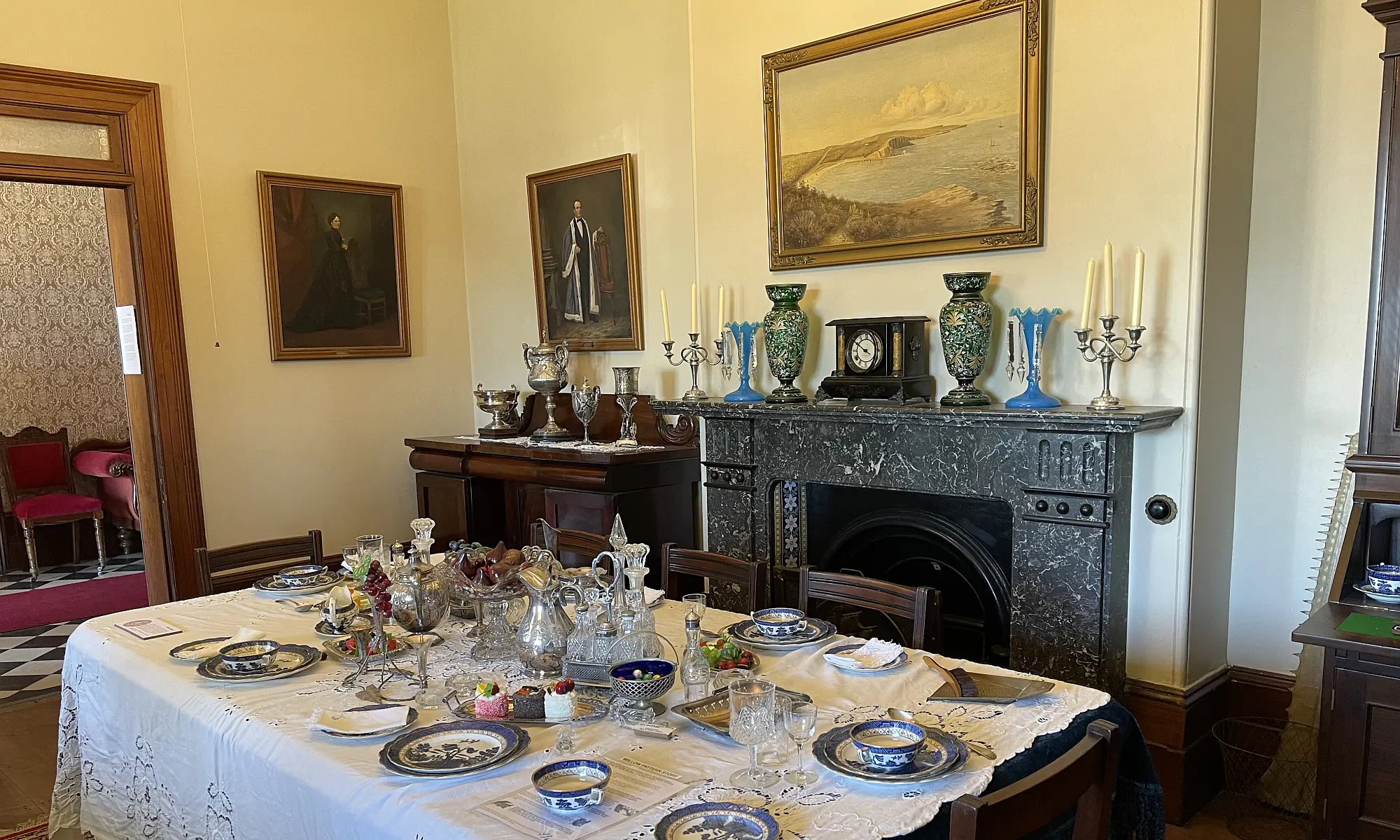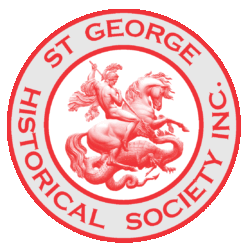by Frances Stacey
“Rockdale College” was originally founded by the Rev. C.T. Forscutt, when he was 40 years old. He was born in Newtown and became a preacher at the Enmore Tabernacle for some years. Later at the age of 40 years, he decided he would found a Boys’ School and was greatly encouraged by the late Dr Prescott of Newington College at Stanmore, who was his life-long friend. He acquired three cottages in Henry Street, somewhere between Sydenham and Tempe, overlooking the railway line on the left, going towards Rockdale. I believe these cottages to be still there – one or two turnings to the right after leaving Sydenham Station and moving towards Tempe. He started his school with, forty boys. After some years there, and the school increasing in numbers, Rev. Forscutt bought a fine property in Bexley, in about 1880. It is thought the home was built by Mr Tidswell, who was t think, at that time, a Wine and Spirit Merchant.
The land was bounded by Gladstone Street, Queen Victoria Street and Monomeeth Street. In Gladstone Street, it adjoined another lovely old home built and occupied by another Tidswell family for. many years. Later this property was bought by Mr George Hudson of the Timber Mill Business. This home finally became “Margaret House” and used for entertainments. Also adjoining was the large residence in Dunmore Street built by Mr Conley. It still stands there as Fairmont Hospital and is the only one of the old homes to be still standing.
The School stood in fourteen acres of land all told and a photograph of the old home may be seen in Lydham Hall. In the College Prospectus it was quoted as “standing in its beautiful park-like grounds overlooking Botany Bay.” The view must have been very lovely then!
A school hospital was built near the lower end of what was called the A.E. Watsons Reserve and on the Monomeeth Street side where the old stone stables were situated. Here were housed the horse-drawn coaches and horses all cared for by “Charly” who always had his “hand bitten”. He was never without a smile to us all and we all loved him. He once allowed me to climb up on to one of the carriages! Barry Humphrey attended to all the outside work in the garden and his wife Agnes did the house-keeping. All were kind and gentle.
The large grounds were sheltered by pine trees where the children could play. They also had a big see-saw and swings.
As the school grew in numbers, Mr Foscutt built a large building in Monomeeth Street. The ground floor was a very large school room, built with a stage at one end for concerts. etc. On one side was a hail with a music room and sitting room, the other with a large hall leading to the front door. On the other side was a verandah looking right down to Gladstone Street and the old home. Upstairs were all the boarders bedrooms.
I can remember one morning so clearly when we had a bad thunderstorm. One of the chimneys was struck by lightning. It was so frightening and I saw Mr Forscutt stagger backwards hold his hand to his forehead, and also one of the teachers with my class right under the window on that side. I picked up a piece of that chimney and kept it for many years with My own geological specimens, but can find it nowhere now! Should I ever find this it will go to “Lydham Hall”.
Many readers may be interested to know that when in later years the old stables were demolished, the bricks which I imagine were standstone, were used by Mr Forscutt to build cottages near the railway at Banksia. The old stables were built to the design of an English barn.
The front verandah of the building in Monomeeth Street was built with a beautiful arch, believed to have been a replica of the arch at the Marist Brothers at Kogarah.
In the early years of the College, a Garden Party was held “in the park-like grounds” each year. Members of Parliament and many other notable people . also were invited – most in those days coming by train. Rockdale Station was beautifully decorated for the occasion with bunting. James Cook – the local member of Parliament at that time – always attended. At that time the school was a “Boys’ School” and it was quite some time before it was to become a “Girls’ School”.
This article was first published in the February 1980 edition of our magazine.
Browse the magazine archive.


Louisa Forscutt née Francis
Is my great grandfather’s sister
We are The Francis Family
Charles and Louisa were married at my ancestral family home (Governor Macquarie’s previous home) Thornleigh.
They were married under the oldest tree in Australia on Australia Day 1888.